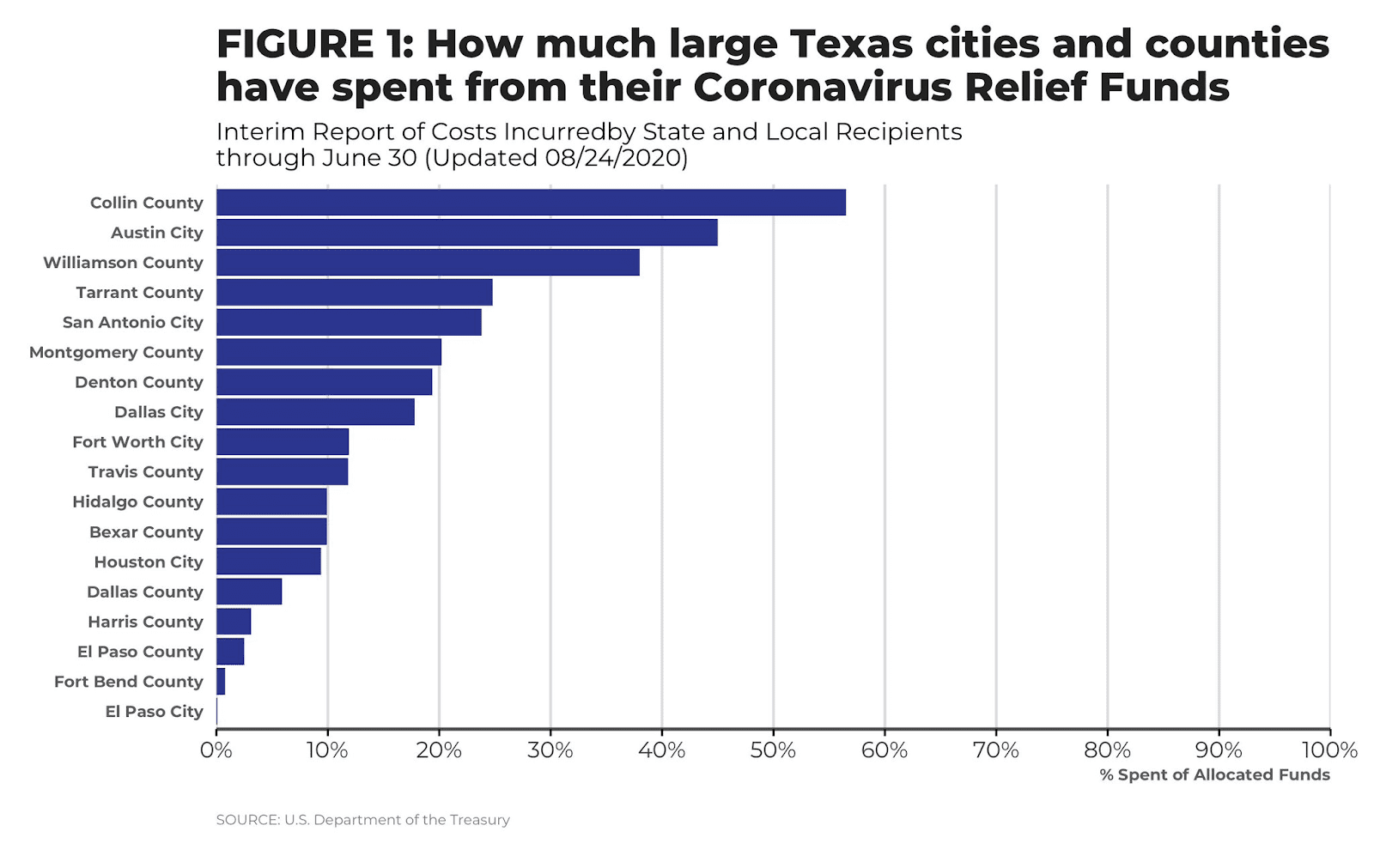Among the many funding streams in the CARES Act, Texas state and local governments received $11,243,461,000 via the Coronavirus Relief Fund (CRF) (1).
Texas’ CRF allocation is split into three main categories:
- $3.2 billion allocated directly to cities and counties with populations greater than 500,000;
- $1.85 billion allocated to the state, available for use by cities and counties with populations less than 500,000; and
- $6.18 billion allocated to the state for state use (2).
The CARES Act and subsequent Treasury guidance have provided broad guidance regarding allowable uses for CRF funds. As a general rule, the CRF may be spent on “necessary expenditures incurred due to the public health emergency” that were not accounted for in pre-pandemic budgets and were incurred between March 1, 2020 and December 30, 2020 (3).


